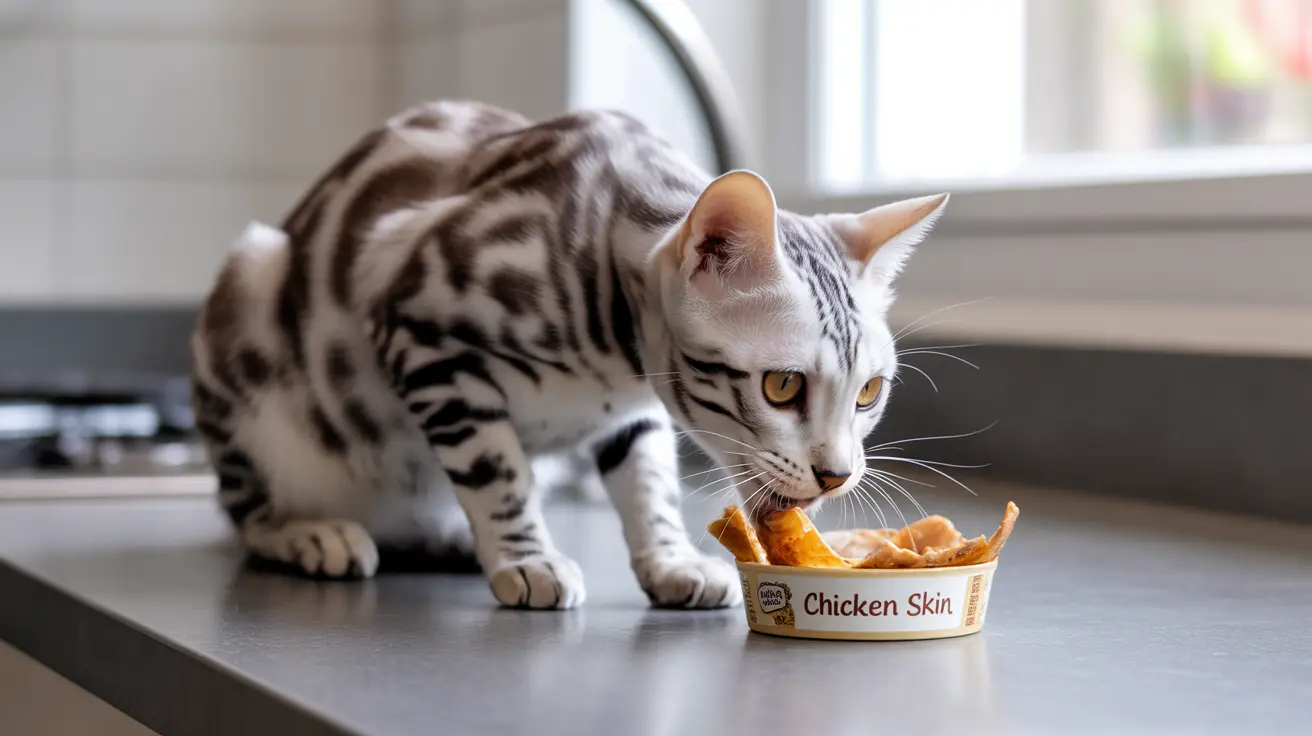Understanding the Nutritional Content of Chicken Skin
Chicken skin is primarily composed of fat, containing approximately 40 grams of fat per 100 grams of skin. While some of this fat is in the form of beneficial unsaturated fats, the high overall fat content makes it a concentrated source of calories that should be carefully monitored in your cat's diet.
The skin does contain small amounts of essential nutrients, including:
- Vitamin A
- Vitamin B12
- Selenium
- Niacin
- Protein
Health Risks and Considerations
While cats need some fat in their diet, excessive consumption of chicken skin can lead to several health issues:
Potential Complications
Regular consumption of chicken skin may cause:
- Obesity and weight management issues
- Pancreatitis (inflammation of the pancreas)
- Digestive upset, including vomiting and diarrhea
- Increased risk of diabetes in predisposed cats
Special Health Conditions
Cats with certain health conditions should avoid chicken skin entirely, including those with:
- Existing pancreatitis
- Obesity
- Diabetes
- Gastrointestinal sensitivities
Safe Preparation and Serving Guidelines
If you choose to offer chicken skin to your cat, follow these essential safety measures:
Proper Preparation
- Always cook chicken skin thoroughly to eliminate harmful bacteria
- Remove all seasonings, spices, and additives
- Avoid skin from prepared human foods like rotisserie chicken
- Serve in small, manageable pieces
Serving Size and Frequency
- Limit chicken skin to occasional treats only
- Offer no more than a small piece (about the size of a cat treat)
- Monitor your cat's reaction after feeding
- Consider it a special treat rather than a regular part of their diet
Safe Alternatives to Chicken Skin
Instead of chicken skin, consider these healthier options:
- Plain, cooked chicken breast
- Commercial cat treats formulated for balanced nutrition
- Small pieces of lean, cooked meat
- Veterinarian-approved protein treats
Frequently Asked Questions
Is it safe to feed my cat chicken skin, and how often can I offer it?
While plain, cooked chicken skin isn't toxic to cats, it should only be offered as an occasional treat in very small amounts. Due to its high fat content, limit servings to no more than once or twice a month, and only if your cat is healthy.
What are the health risks of feeding chicken skin to cats, especially regarding fat content?
The high fat content in chicken skin can lead to obesity, pancreatitis, and digestive issues. Regular consumption may contribute to weight gain and associated health problems like diabetes and joint issues.
How should chicken skin be prepared before giving it to a cat to avoid toxicity and illness?
Always cook chicken skin thoroughly to eliminate harmful bacteria. Remove all seasonings, spices, and additives. Never serve raw chicken skin, and avoid skin from prepared human foods that may contain harmful ingredients.
Can seasoned or cooked-for-human chicken skin harm my cat, and which ingredients should I avoid?
Yes, seasoned chicken skin can be harmful to cats. Avoid skin containing garlic, onions, salt, pepper, or any other seasonings, as these can be toxic to cats. Also avoid skin that's been fried or prepared with oils or butter.
Are there any situations or health conditions when chicken skin should be completely avoided in a cat's diet?
Cats with pancreatitis, obesity, diabetes, or sensitive stomachs should not be given chicken skin. Additionally, if your cat has any underlying health conditions, consult with your veterinarian before offering any new treats.
Conclusion
While cats can technically eat plain, cooked chicken skin in very small amounts, it's not recommended as a regular treat. The high fat content and potential risks outweigh any minimal nutritional benefits. Instead, focus on providing your cat with a balanced, veterinarian-approved diet and healthier treat alternatives.






